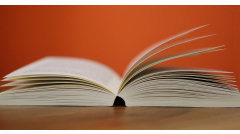Have you ever felt the chaos of a busy classroom creeping into your meticulously planned lesson? Mastering Weekly Lesson Planning with Teacher Created Resources is your ultimate guide to transforming that chaos into a seamless, engaging learning experience. This resource isn’t just a book; it’s a companion that supports educators in their quest to create structured, meaningful lesson plans that resonate with students.
Designed with teachers' unique needs in mind, this guide walks you through practical strategies for effective lesson planning. Whether you’re a seasoned educator or just starting out, the insights found within these pages will empower you to take charge of your teaching journey, ensuring that every class is not just planned, but planned with purpose and creativity.
The Teacher Created Resources Lesson Plan Book is a versatile and essential tool that helps educators streamline their lesson planning process. Featuring comprehensive templates and practical strategies, this resource is designed to keep teachers organized while allowing them to tap into their creativity. It embraces the importance of effective lesson delivery with a focus on student engagement and adaptability. With clear layouts and numerous examples, this lesson plan book is perfect for both new and experienced teachers looking to enhance their planning skills.
Setting Up Your Book
Begin your journey with the Teacher Created Resources Lesson Plan Book by gently opening the book to reveal its beautifully designed pages. As you flip through, take a moment to familiarize yourself with the layout and the sections included. The Teacher Created Resources Lesson Plan Book often includes dedicated spaces for weekly planning, student and classroom information, and even calendar prompts. This will serve as the foundation for your lesson planning, providing ample room for creativity and detailed organization.
Next, identify and label the various sections tailored for your teaching needs. Use tabs or stickers to mark sections such as “Weekly Plans,” “Important Dates,” and “Student Information.” This increases your efficiency when accessing essential information quickly. Personalizing the cover and the first few pages is another step that transforms your book into a reflection of your teaching style. Consider adding inspiring quotes, photographs, or artwork that resonates with your philosophy of education. Use decorative tape or stickers to beautify the cover and enhance the introductory pages.
- Customize section labels for easy navigation.
- Incorporate your school’s colors or themes.
- Add personal touches like your favorite motivational quotes.
- Consider dedicating a page for your teaching goals or inspirations.
Understanding Page Layout
The Teacher Created Resources Lesson Plan Book features an intuitive page layout specifically designed to facilitate effective weekly lesson planning. Each page includes distinct sections that provide educators with a structured approach to organizing their lessons for the week. The sections are meticulously outlined to include the date, learning objectives, activities, assessments, and notes, making it simple to track educational progress and maintain clarity.
The date section serves as a pivotal reference point, allowing teachers to anchor their plans clearly within the week. Next, the objectives section encourages educators to articulate what students are expected to learn, aligning lessons with educational standards. In the activities section, space is allocated for detailed descriptions of instructional methods, materials needed, and potential grouping for student engagement. Meanwhile, the assessments area offers a dedicated space for educators to consider how they will evaluate student understanding, using both formative and summative assessment strategies. Lastly, the notes section is invaluable for jotting down thoughts, adjustments, or reminders that may arise during planning.
- Utilize bullet points in the activities section for clarity.
- Date should be updated weekly to keep lessons relevant.
- Incorporate student feedback in the notes section for continuous improvement.
- Review objectives regularly to ensure they remain aligned with lesson outcomes.
Weekly Planning Routine
Mastering the art of weekly lesson planning is essential for effective teaching, and The Teacher Created Resources Lesson Plan Book is a powerful tool in achieving this goal. Establishing a consistent weekly planning routine can significantly enhance your preparation and organization. Begin by designating a specific day and time each week solely for planning. This dedicated time allows for reflection on the previous week's lessons and encourages a proactive approach toward the upcoming week. Setting aside 60 to 90 minutes is often optimal, ensuring you have enough time to gather materials and outline your objectives without rushing. Make this session a non-negotiable appointment in your calendar.
Before you sit down to plan, collect essential information that will inform your lesson design. Gather resources such as student progress data, curriculum standards, and prior lesson notes. Review the social calendar for any holidays or events that may impact your schedule. Utilizing the Teacher Created Resources Lesson Plan Book, map out key elements for each subject area or class period. Create a weekly timeline that identifies specific learning objectives, instructional methods, and assessment strategies. Ensure every lesson is sequential and builds upon the last, fostering a comprehensive learning experience.
- Identify key learning goals for each subject.
- Outline general themes or units of study that will guide your planning.
- Incorporate diverse instructional strategies to cater to different learning styles.
- Designate assessment methods to evaluate student understanding on a weekly basis.
- Schedule potential field trips or guest speakers to enrich your lessons.
Incorporating Standards
Integrating curriculum standards into your weekly lesson planning using the Teacher Created Resources Lesson Plan Book is essential for creating a cohesive and effective learning experience. Begin by familiarizing yourself with the specific standards applicable to your grade level and subject area. Ensure you have access to state and national standards resources that define the core competencies expected of students. The Teacher Created Resources Lesson Plan Book provides a dedicated space to outline these standards for easy reference throughout your planning process. When drafting your lesson objectives, clearly align them with these standards by using specific language to describe what students should know and be able to do by the end of each lesson. For example, if the standard focuses on 'analyzing character motivations,' you might write an objective that states, 'Students will analyze the motivations of key characters in the assigned text through discussion and written reflection.' This explicit connection not only aids in compliance but also reinforces the significance of the standards in your instruction.
To ensure alignment and compliance while planning, utilize checklists or rubrics that reference each standard against your lesson objectives. The Teacher Created Resources platform encourages educators to reflect on their objectives, providing a systematic approach to verify that each lesson meets the required standards. You might also consider collaborating with colleagues to review and critique lesson plans, ensuring that all instructional goals align well with the intended standards. Strategies such as peer review or professional learning communities can be advantageous. Implementation can also involve practical strategies like frequent assessments to gauge understanding and adjust lessons in real-time, creating a dynamic learning environment. Compliance tracking could include notes within the Lesson Plan Book that highlight how each lesson addresses specific standards. This method serves as not only a reminder but also a motivational tool for ensuring instructional integrity and direction.
- Utilize state and national standards resources.
- Integrate checklists or rubrics for verification.
- Encourage peer collaboration for planning review.
- Implement frequent assessments for understanding.
- Add compliance notes in your Lesson Plan Book.
Adapting Plans for Differentiation
Adapting lesson plans is essential for addressing the diverse needs of students in the classroom. The Teacher Created Resources Lesson Plan Book provides educators with the tools to make these necessary adjustments effectively. Begin by assessing students' skills, learning styles, and interests. Document the data collected and use it as a guide when modifying your plans. For example, for a science lesson on ecosystems, you could tailor activities to different learning preferences. Visual learners might benefit from drawing their own diagrams, while kinesthetic learners could engage in a hands-on project like creating a mini-ecosystem using terrariums.
Incorporating various modifications and accommodations within your lesson plans can significantly enhance student engagement and understanding. Some strategies to consider include:
- Adjusting the complexity of tasks—break up a challenging activity into simpler steps.
- Providing varied resources—use videos, articles, or interactive games to present information.
- Utilizing flexible grouping—allow students to work in pairs, small groups, or individually based on their comfort and skill levels.
- Offering additional time—granting extended time for assessments can reduce anxiety and increase performance.
It’s vital to document these adaptations within the Teacher Created Resources Lesson Plan Book—a practical means to ensure consistency and reflect on what works best. Use checkboxes or comment boxes in your planner to note specific strategies applied for individual students and their effectiveness.
- Implement regular reflections—after each lesson, take time to record which adaptations were successful.
- Maintain communication with support staff—coordinate with special education teachers to align modifications.
Tracking Student Progress
Utilizing the Teacher Created Resources Lesson Plan Book effectively allows educators to meticulously track student progress throughout the academic year. This comprehensive planner enables you to note down important observations about each student’s performance and engagement during lessons. Begin by dedicating a section of your lesson plan book to jotting down key observations. This could include noting which students exceed expectations, those who need additional support, and specific behaviors that impact learning. Such observations help in tailoring your instructional strategies to meet the needs of diverse learners.
In addition to observations, assessments play a vital role in tracking student progress. The Teacher Created Resources Lesson Plan Book features ample space for recording results from both formative and summative assessments. As you conduct quizzes, tests, and informal evaluations, document scores and comments directly in your planner. To streamline the review process, implement a weekly check-in where you revisit these assessments. This ensures that you stay informed about each student’s progress over time and can adjust your teaching methods accordingly. Consider the following tips for effective tracking:
- Utilize color coding to differentiate between student needs or performance levels.
- Set aside a specific time each week to review recorded data and adjust lesson plans as necessary.
- Engage in reflective practice by noting what strategies were successful or challenging for specific students.
Monthly Reviews
Conducting monthly reviews of your lesson plans using the Teacher Created Resources Lesson Plan Book is a valuable approach to fine-tuning your teaching methods. This process allows educators to assess the effectiveness of each lesson, identify trends in student engagement and comprehension, and make informed adjustments for future lessons. Here’s a comprehensive method to execute your monthly reviews effectively.
Begin the review by gathering all lesson plans from the past month. As you assess each lesson, consider these steps:
- Document student performance metrics and feedback gathered during the lessons. Note any consistent difficulties students faced or concepts they mastered quickly.
- Reflect on your teaching approach for each lesson. Ask questions like: Did the lesson structure facilitate engagement? Were the materials from the Teacher Created Resources effective? Did students achieve the learning objectives?
- Create a strengths and weaknesses list for each lesson. Highlight successful strategies and resources that led to high engagement or understanding and clearly note areas needing improvement.
- Generate actionable notes for future lessons. This might include adjustments in pacing, introducing new instructional materials, or incorporating different teaching methods based on past results.
As you compile your notes, make time to visualize trends over the month that could impact your overall teaching strategy:
- Utilize charts or graphs to represent data such as student performance trends or engagement levels in various subjects.
- Share findings with colleagues or seek feedback for additional insights.
- Incorporate this data into planning meetings for collaborative input on curricular adjustments.
Related Products
Collaborating with Colleagues
Utilizing the Teacher Created Resources Lesson Plan Book effectively enhances collaboration among educators. Sharing lesson plans fosters a community of practice that benefits both teachers and students. Begin by organizing regular meetings with colleagues to discuss the curriculum and share insights. Each teacher can bring their lesson plans to the table, highlighting successful strategies and outcomes. Documenting these discussions in the lesson plan book not only keeps everyone informed but also enables collective growth. Encourage colleagues to annotate each other's plans, offering constructive feedback that can lead to improved teaching methods.
Establish specific times for brainstorming sessions focused on innovative activities to engage students. Use the lesson plan book to jot down new ideas, themes, or projects generated during these meetings. This collaborative approach not only enriches your own plan but also allows you to build a supportive network of ideas. Additionally, consider pairing up with a colleague to co-teach a unit. This partnership can lead to a diverse range of instructional methods, enriching the learning experience for students.
- Utilize digital tools to exchange lesson plans and feedback.
- Document brainstorming sessions for future reference.
- Incorporate student feedback into planning discussions.
Utilizing Special Sections
Maximizing the Teacher Created Resources Lesson Plan Book involves exploring its special sections, which are designed to enhance your lesson planning experience. One invaluable feature is the notes pages, which are perfect for jotting down spontaneous ideas, additional resources, or reminders related to your curriculum. These notes can serve as a brainstorming space where you can brainstorm methods to engage students or outline potential interdisciplinary connections you may want to explore in future lessons. By keeping these pages organized and labeled, you can quickly refer back to your plans and modify them as needed to fit your students’ evolving needs.
Another beneficial area is the section dedicated to reflections, which allows educators to think critically about their teaching practices. Using this space effectively can improve your instructional strategies over time. After each lesson, take a few moments to reflect on what worked well, what didn’t, and how you can adapt the lesson for future classes. Documenting student responses or engagement levels can provide insights that will guide your adjustments. Additionally, consider utilizing the contact lists section to maintain connections with parents and colleagues for collaborative projects or obtaining support for student instructions. This can foster a supportive teaching environment, benefiting both you and your students.
- Utilize the reflection space for real-time feedback on your lesson's effectiveness.
- Label notes pages by subject or week for easy access when planning.
- Collaborate with colleagues listed in your contact section for new ideas and resources.
- Integrate student feedback into your reflection notes to tailor future lessons.
Organizing Resources
To master weekly lesson planning using the Teacher Created Resources Lesson Plan Book, one of the most effective strategies involves the precise organization of teaching materials. Start by categorizing resources based on each subject area or theme. Have designated folders or binders for each category where you can store worksheets, articles, and activities. Incorporating easily identifiable labels will save time when searching for materials, creating an efficient workflow. Utilizing color-coded systems can also enhance the visual organization, allowing for quick glances to determine where to find the needed resources.
Implementing a system for quick referencing is crucial for seamless lesson execution. Keep a master list of all resources aligned with your lesson plans, which can serve as an invaluable guide during planning sessions. Consider creating a digital document or a spreadsheet that outlines lesson objectives alongside corresponding materials—this allows you to make connections between what students will learn and the activities you will provide. Some additional tips include:
- Use clear dividers for each section in your lesson plan book for easy navigation.
- Regularly update your resource list and keep track of what materials are used each week.
- Assess the effectiveness of your materials and adjust as necessary to ensure optimal learning experiences.
- Store frequently used materials in a designated “ready to go” zone for immediate access.
Why We Chose This Product
Choosing the Teacher Created Resources Lesson Plan Book for this guide was a no-brainer because it perfectly embodies the essence of effective teaching. The thorough layout and practical examples found in this resource make it not just a tool but an essential ally for all educators who aim to foster a productive learning environment. It perfectly captures the balance between creativity and structure, giving teachers the freedom to innovate while keeping things organized.
- Comprehensive planning templates
- Focus on student engagement
- Customizable lesson plans
- Time-saving organizational tools
This resource stands out for its user-friendly approach and adaptability, making it a staple for anyone serious about elevating their lesson planning. With this guide at your fingertips, you’ll be well on your way to crafting lessons that inspire and motivate your students to thrive.
The Teacher Created Resources Lesson Plan Book is a versatile and essential tool that helps educators streamline their lesson planning process. Featuring comprehensive templates and practical strategies, this resource is designed to keep teachers organized while allowing them to tap into their creativity. It embraces the importance of effective lesson delivery with a focus on student engagement and adaptability. With clear layouts and numerous examples, this lesson plan book is perfect for both new and experienced teachers looking to enhance their planning skills.










